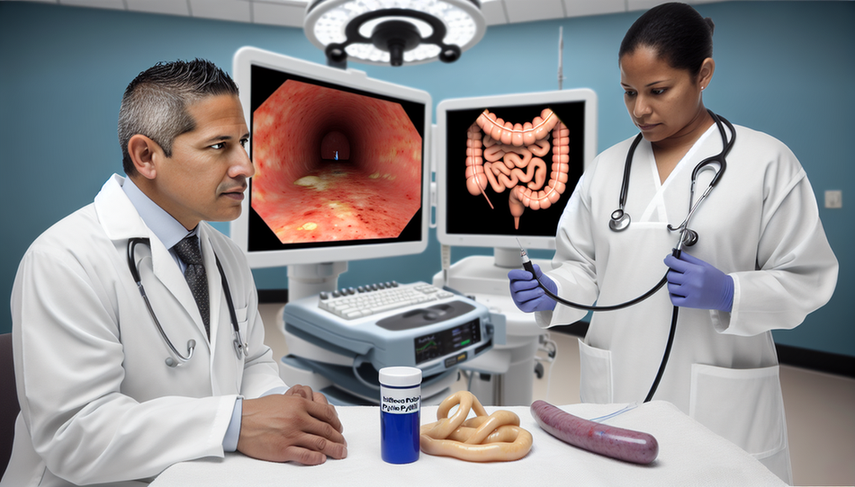Gastritis Diagnosis: Upper Gastrointestinal Endoscopy, Biopsy, and Urease Test for Gastric Inflammation

The gastritis diagnosis is a complex process that requires a combination of advanced techniques to identify the presence of gastric inflammation and determine its underlying cause. Upper gastrointestinal endoscopy and biopsy are essential tools in this process, allowing for direct visualization and histological analysis of gastric tissue. Additionally, the study of Helicobacter pylori is crucial, given its predominant role in the etiology of chronic gastritis and its association with the risk of gastric cancer.
The Kyoto classification is an endoscopic system that evaluates the presence of H. pylori and the risk of gastric cancer by observing specific characteristics of the gastric mucosa, such as atrophy and intestinal metaplasia. This system has proven effective in stratifying the risk of gastric cancer in patients with chronic gastritis (see more). Endoscopy, complemented by advanced techniques such as magnification and enhanced imaging, allows for precise detection of suspicious lesions, facilitating the early diagnosis of gastric neoplasms (see more).
The urease test and other non-invasive tests for H. pylori detection, such as the urea breath test and stool antigen test, complement the endoscopic diagnosis. Gastric biopsy remains the gold standard for confirming H. pylori infection and assessing the severity of gastric inflammation. The clinical-pathological correlation is fundamental for an accurate diagnosis, as endoscopic characteristics must be interpreted in conjunction with histological findings (see more).
In conclusion, the diagnosis of gastritis requires a multidisciplinary approach that combines endoscopy, biopsy, and H. pylori study. The implementation of classification systems like Kyoto and the use of advanced endoscopic imaging techniques have significantly improved diagnostic accuracy and the ability to stratify gastric cancer risk. Early detection and eradication of H. pylori are essential to prevent the progression of gastritis to more severe conditions, such as gastric cancer (see more).
Referencias
- [1] Endoscopic Kyoto classification of Helicobacter pylori infection and gastric cancer risk diagnosis
- [2] History of chronic gastritis: How our perceptions have changed
- [3] Diagnosis of Helicobacter pylori-related chronic gastritis, gastric adenoma and early gastric cancer by magnifying endoscopy
- [4] What is gastritis? What is gastropathy? How is it classified?
- [5] Helicobacter pylori associated gastric intestinal metaplasia: Treatment and surveillance
Created 2/1/2025
